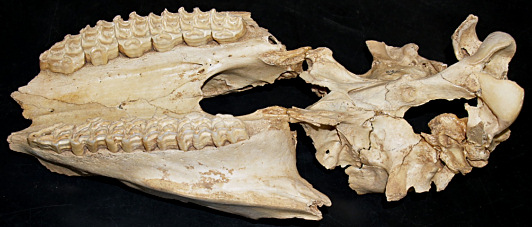

The lead line in a 2005 news report in the scientific journal Science is "DNA analysis has straightened out some of the tangled history of the North American horse and reduced its species from 50 to 2." In the study itself, researchers looked at DNA from 53 fossil horses from various places around the world dating from about 2000 to 53,000 years ago. According to them, the species represented by the modern horse occurred throughout Eurasia and North America, and the second species was home grown, occurring only in North America.
Sure simplifies things, but unfortunately, it's almost certainly
wrong. The defect is that bugaboo of biological research, insufficient sampling. Likely
correct for the regions studied, but only specimens from Wyoming and southern Nevada
represent North America south of Canada in this study. The rest of North America,
including sites where three to four well marked morphological types occur together,
went unsampled. The ever-present tendency is to overstate the results of research; too
few of us resist its allure. Here, we can predict that further sampling will result in
one loud horse laugh!

Contributor: Arthur H. Harris, Laboratory for Environmental Biology, Centennial Museum, University of Texas at El Paso.
Desert Diary is a joint production of the Centennial Museum and KTEP National Public Radio at the University of Texas at El Paso.

Ventral view of the skull of an extinct horse, late Pleistocene. Laboratory for Environmental Biology specimen (UTEP 54.1242).
Holden, C., ed. 2005. Random samples. The horse's tale. Science 309:378.